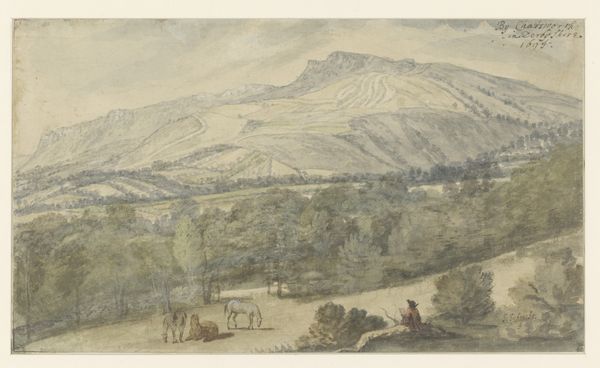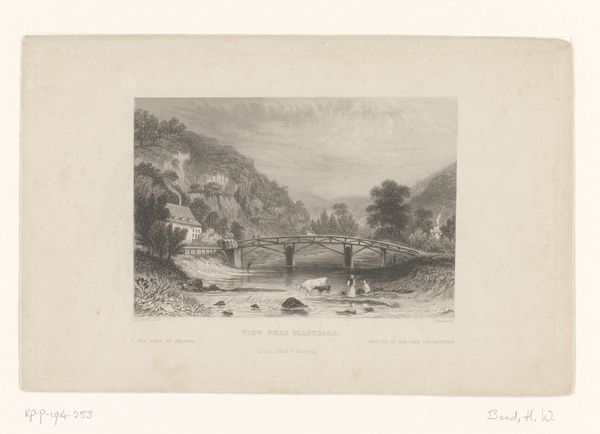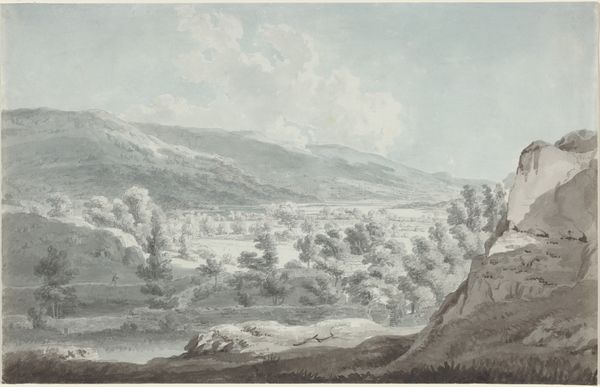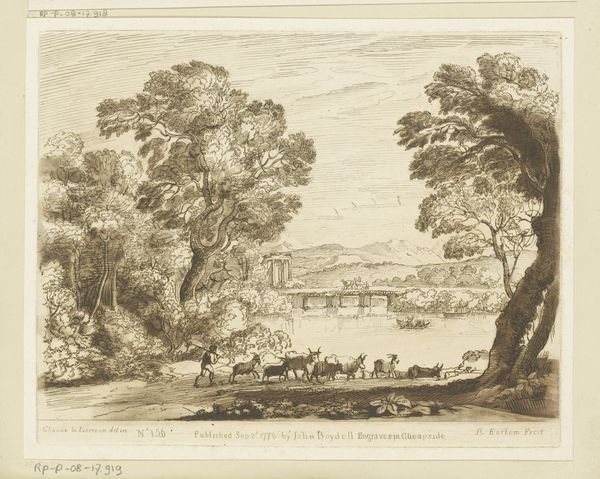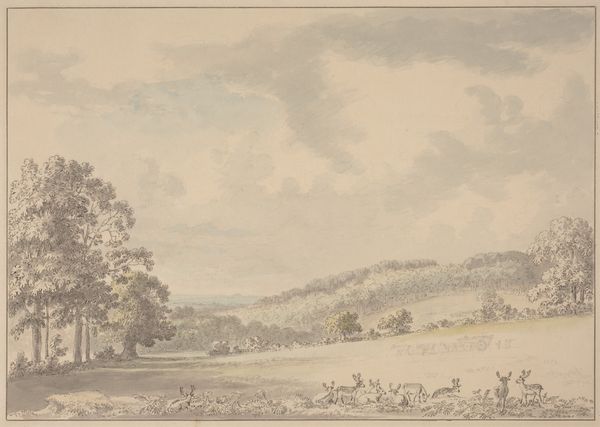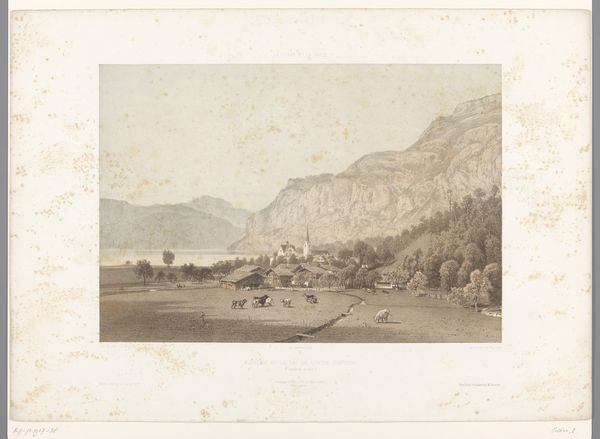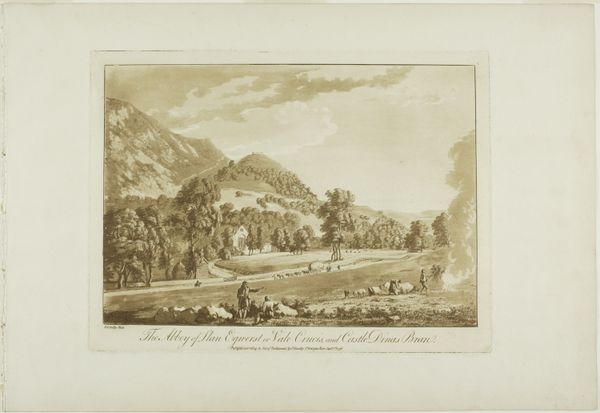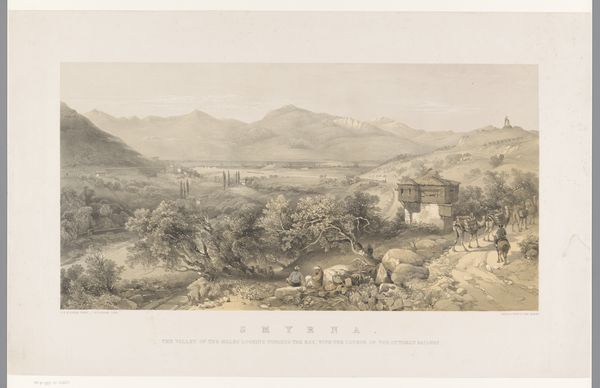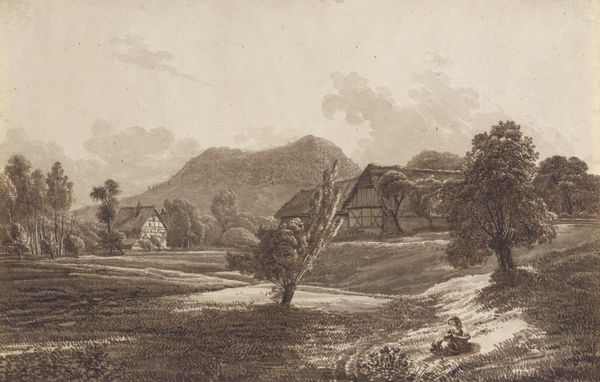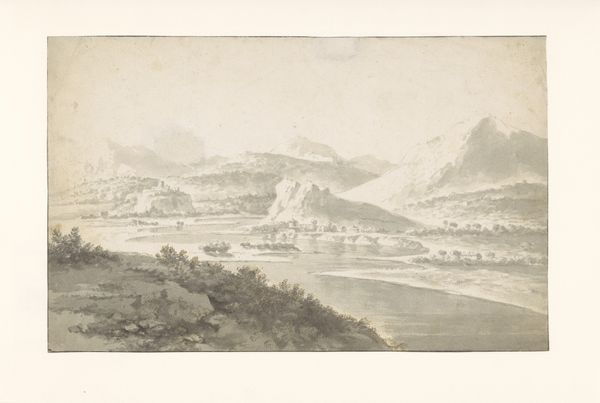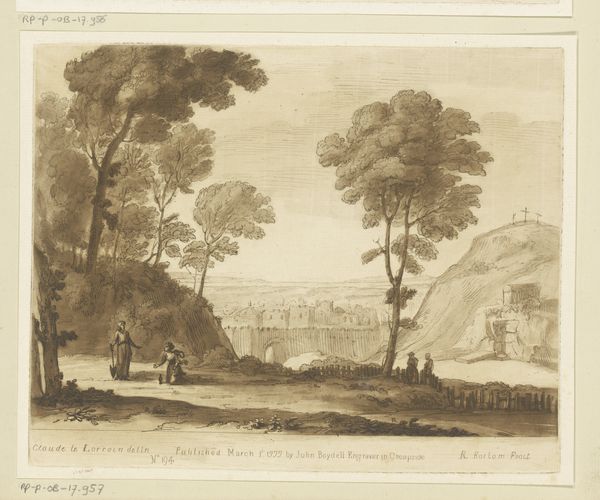
Copyright: Public Domain
Curator: This is "Tetschen an der Elbe," a work on paper created using pencil, charcoal, and ink in 1873 by Friedrich Eugen Peipers, currently residing here in the Städel Museum. Editor: My first impression? Serenity, maybe even melancholy. The muted tones, the delicate lines... it feels like a memory, viewed through a gauzy curtain of time. Curator: Indeed, the romantic style leans heavily into eliciting those emotions. Peipers was working in a period where landscape was being used to evoke inner emotional states, often tinged with a sense of longing for an idealized past. We also see an element of portraying rising industrialism. Editor: Right, because if you focus on that steamboat chugging along... It's this intruder in an otherwise peaceful landscape. Is Peipers romanticizing the past, contrasting it against the grime and smoke of the future? The artist is at ground-level capturing the castle at eye level. Curator: Precisely. Artists like Peipers were navigating the changing social and political landscape. Industrial growth and the rise of the bourgeoisie challenged the existing order. Artists responded, in part, by valorizing nature, spirituality, or, like here, imbuing landscapes with subtle narratives of progress and nostalgia. And Peipers uses an illustrative view point. We can see, even, a possible portrait. Editor: Absolutely. There's something undeniably poignant about that contrast, even now. Makes me wonder what Peipers would think of our time—so much further down that industrial path. And so interesting, what might seem to be a quick travel sketch could be full of political commentary. Curator: Sketches like this offer a fascinating window into the anxieties and aspirations of the era. They reveal how art participated in broader cultural conversations. That pencil line itself is part of that dialogue. Editor: Exactly! Who knew such gentle strokes could carry such weighty ideas? It gives new meaning to drawing a line in the sand, doesn't it? This little study is a beautiful landscape and a thought experiment all in one. Curator: Well said. I find myself reconsidering the politics of this work on paper. Editor: Me too, I appreciate art work such as this much more now.
Comments
No comments
Be the first to comment and join the conversation on the ultimate creative platform.
